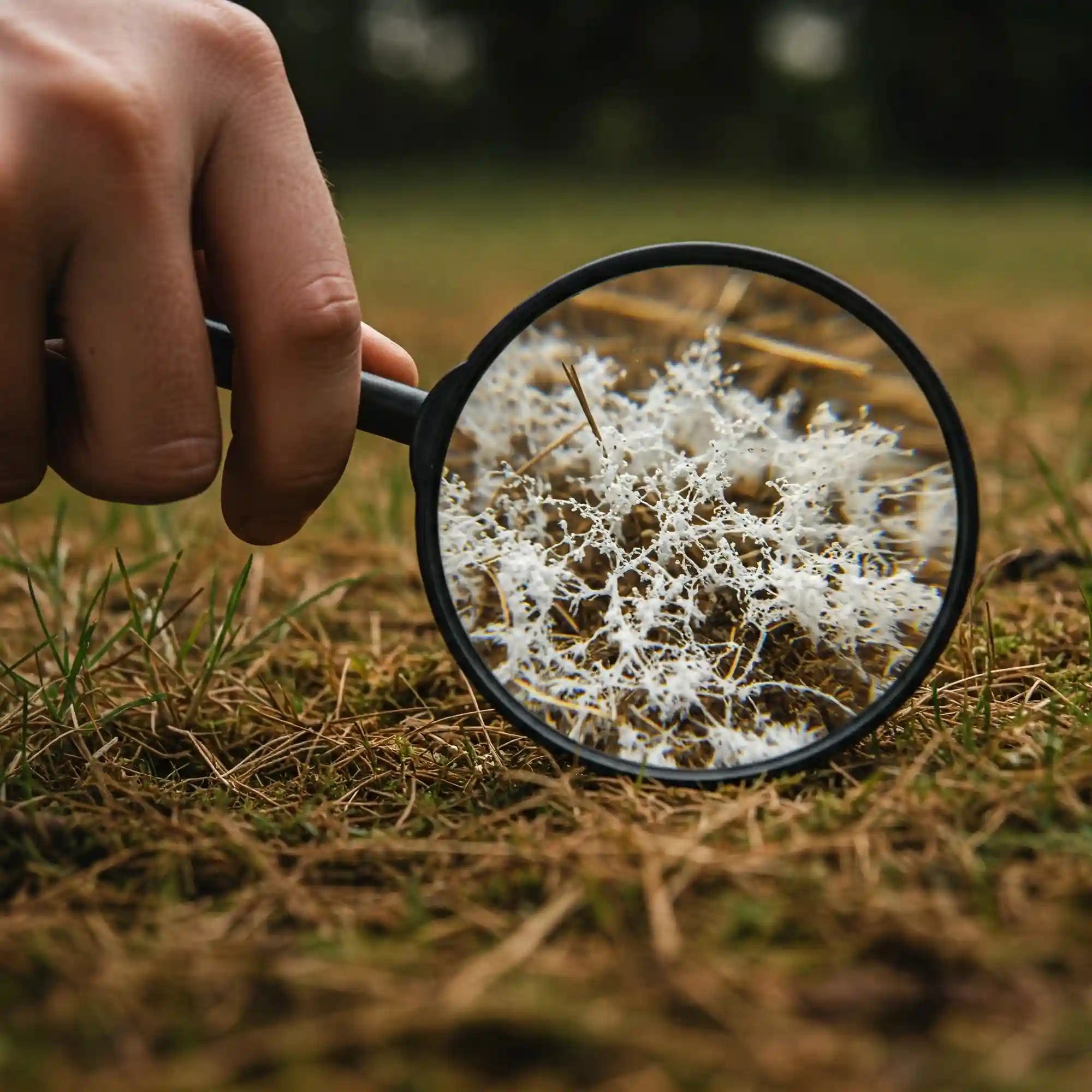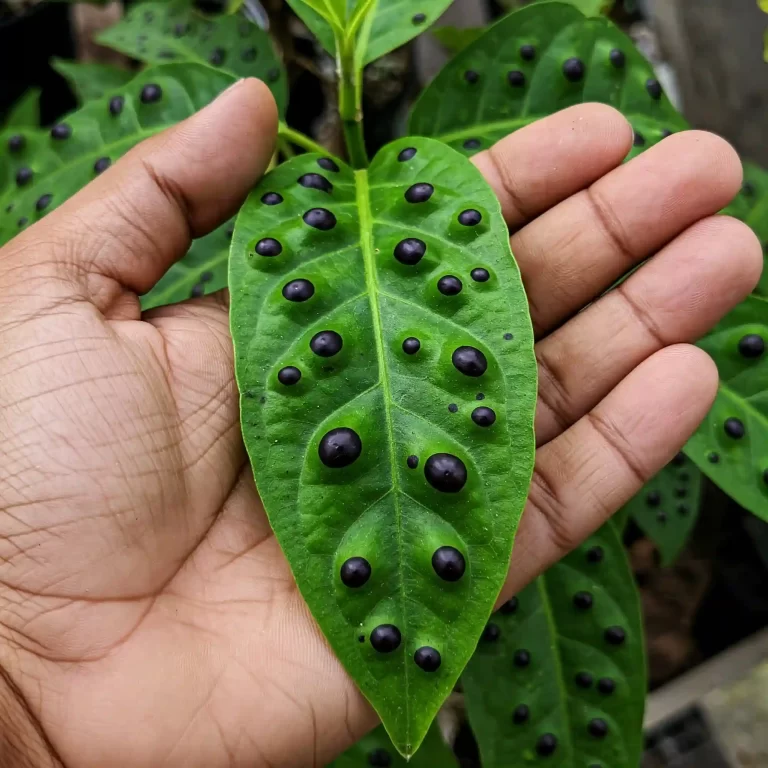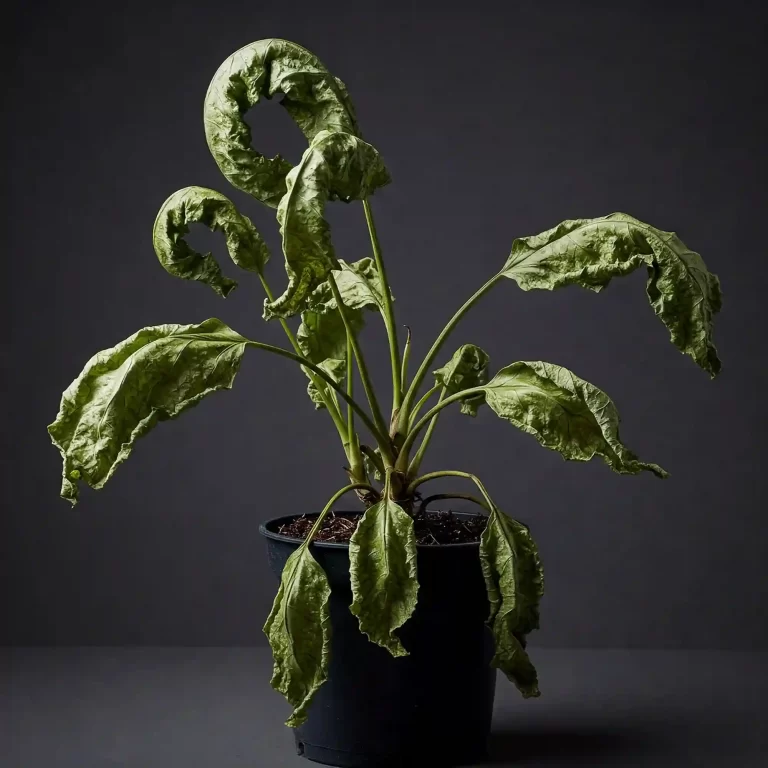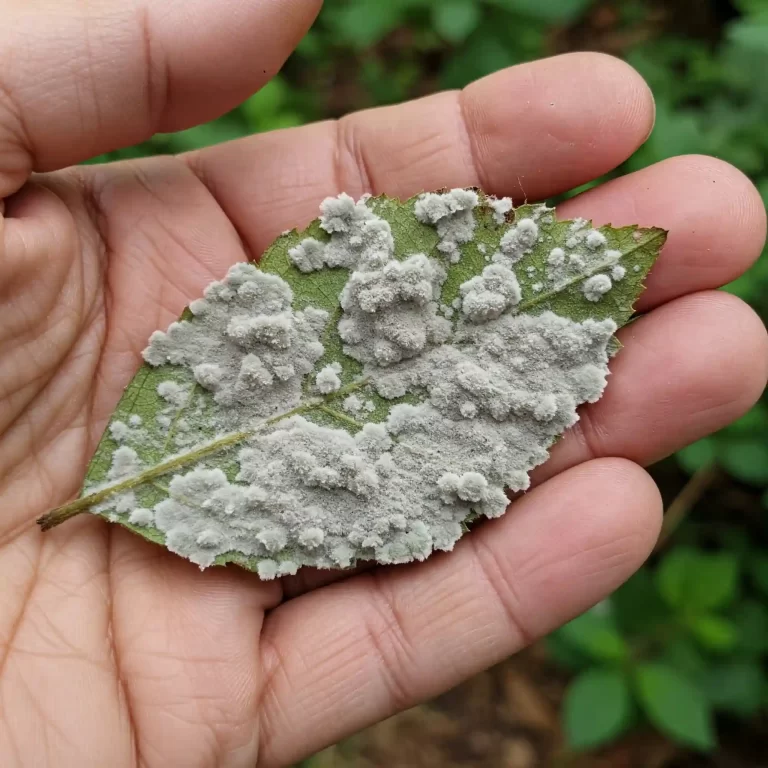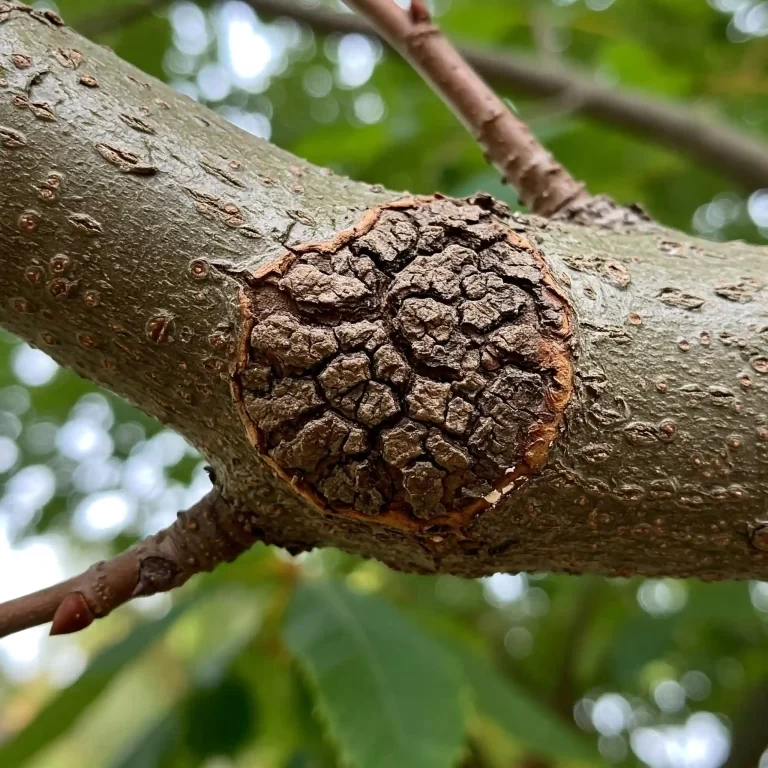Brown Patch: Your Guide to Identification, Treatment, and Prevention
Have you ever walked outside, coffee in hand, ready to admire your perfectly manicured lawn, only to be met with the sight of unsightly brown patches spreading like wildfire? It’s a gut-wrenching feeling, isn’t it? All that hard work seemingly going to waste. I’ve been there, trust me. That sinking feeling of seeing your beautiful turf succumb to disease is something no gardener wants to experience. But don’t despair! I’m here to share my knowledge and experience to help you understand, treat, and – most importantly – prevent brown patch from ravaging your lawn. This guide will equip you with the tools and techniques you need to keep your turfgrass healthy and vibrant, so you can enjoy the lush, green oasis you deserve.
What is Brown Patch and How to Identify It?
Brown patch, a prevalent turfgrass disease, is caused by the fungal pathogen Rhizoctonia solani. This insidious fungus thrives in warm, humid conditions, wreaking havoc on lawns across the country. The name “brown patch” is a fitting description, as the disease manifests as distinct circular or irregular patches of dead or dying grass, creating unsightly blemishes on your once-pristine lawn. These patches can range in size from a few inches to several feet in diameter, and in severe cases, they can merge, forming large, unsightly areas of dead turf.
Understanding the characteristics of brown patch is crucial for early detection and effective treatment. One of the hallmark signs of brown patch is the presence of a “smoke ring” – a darker, often sunken border that encircles the affected area. This distinct ring is a result of the fungus actively growing and spreading outwards.
Beyond the visual cues, it’s important to understand the underlying mechanisms of the disease. Rhizoctonia solani thrives in conditions with high humidity and warm temperatures. Prolonged periods of leaf wetness, often caused by heavy dew, irrigation, or frequent rainfall, create an ideal environment for the fungus to flourish. The fungus attacks the crown and roots of the grass plants, disrupting their ability to absorb water and nutrients. This leads to the characteristic browning and wilting of the affected grass blades.
In some cases, you might even be able to see the fungus itself. Under humid conditions, especially early in the morning, you may notice a cottony, white or gray growth on the affected grass blades. This is the mycelium, the thread-like network of fungal filaments that spreads through the turf.
Recognizing these symptoms is crucial for timely intervention. Early detection and prompt action can significantly minimize the damage caused by brown patch and help your lawn recover more quickly.
Brown Patch Treatment: Effective Solutions for a Healthy Lawn
Once you’ve confirmed that brown patch is the culprit behind those unsightly spots on your lawn, it’s time to take action. The good news is that with a combination of effective treatments and proactive lawn care practices, you can control this disease and restore your lawn to its former glory.
Fungicides:
Fungicides are a crucial component of brown patch treatment. They work by disrupting the fungal growth cycle, either by killing the fungus directly or preventing it from reproducing. There are two main types of fungicides:
- Contact Fungicides: These fungicides work by directly killing the fungus upon contact. They are most effective when applied preventively or shortly after the first signs of infection appear. However, they provide only temporary protection and need to be reapplied regularly, especially after heavy rain or irrigation.
- Systemic Fungicides: These fungicides are absorbed by the plant and then translocated throughout the grass tissues. This provides more sustained protection against the fungus, as it can reach areas that contact fungicides might miss. Systemic fungicides are often preferred for their longer-lasting effects.
Choosing the Right Fungicide:
Selecting the right fungicide can be overwhelming. Factors to consider include:
- Type of grass: Different fungicides may be more effective on certain grass species.
- Severity of the infection: For mild infections, a contact fungicide may be sufficient. However, more severe cases may require systemic fungicides.
- Environmental conditions: High humidity and warm temperatures can favor the growth of certain fungi, so choose a fungicide that is effective under those conditions.
- Safety considerations: Always follow the manufacturer’s instructions carefully and take necessary precautions to protect yourself and the environment.
Cultural Practices for Brown Patch Management:
While fungicides are essential for controlling brown patch, they are most effective when combined with sound cultural practices. These practices help create a less hospitable environment for the fungus and strengthen the overall health of your lawn.
- Proper Watering: One of the most crucial factors in preventing and managing brown patch is proper watering. Overwatering creates consistently moist conditions that favor fungal growth. Aim to water deeply and infrequently, allowing the top inch or two of soil to dry out between waterings. Early morning watering is ideal, as it allows the grass blades to dry completely before nightfall.
- Mowing Practices: Maintaining the correct mowing height for your specific grass type is essential. Mowing too short can stress the grass and make it more susceptible to disease. Avoid mowing when the grass is wet, as this can spread the fungus and damage the grass blades.
- Fertilization: While nitrogen is essential for healthy grass growth, excessive fertilization can weaken the grass and make it more susceptible to disease. Use a balanced fertilizer that is appropriate for your grass type and follow the recommended application rates. Avoid fertilizing during periods of high stress, such as drought or extreme heat.
- Aeration and Thatch Control: Aeration helps improve air and water penetration into the soil, reducing compaction and promoting healthy root growth. Thatch, a layer of dead and decaying organic matter, can also create a favorable environment for fungal growth. Dethatching can help remove excess thatch and improve air circulation.
By implementing these cultural practices alongside a well-chosen fungicide program, you can effectively manage brown patch and create a healthy, thriving lawn.
Brown Patch Prevention: Proactive Steps for a Lush Lawn
The old adage “prevention is better than cure” certainly rings true when it comes to brown patch. By proactively implementing a range of preventive measures, you can significantly reduce the risk of this disease impacting your lawn. A healthy lawn is inherently more resilient to diseases, so creating an environment that promotes vigorous growth is key.
Maintaining a Healthy Lawn:
A healthy lawn is the best defense against brown patch. This involves providing your grass with the essential nutrients, water, and sunlight it needs to thrive. Regular fertilization, proper watering, and mowing at the correct height are all crucial components of a healthy lawn care regimen.
Water Wisely:
Overwatering is a common mistake that can create the perfect conditions for brown patch to thrive. Soggy soil and prolonged periods of leaf wetness provide an ideal environment for the fungus to germinate and spread. Aim to water deeply and infrequently, allowing the top inch or two of soil to dry out between waterings. Early morning watering is generally recommended, as it allows the grass blades to dry completely before nightfall.
Mow Correctly:
Maintaining the correct mowing height for your specific grass type is essential. Mowing too short can stress the grass, weakening it and making it more susceptible to disease. A general rule of thumb is to mow no more than one-third of the grass blade at a time. Avoid mowing during wet conditions, as this can spread the fungus and damage the grass blades.
Fertilize Appropriately:
While nitrogen is essential for healthy grass growth, excessive fertilization can actually weaken the grass and make it more susceptible to disease. Over-fertilization can lead to lush, soft growth that is more prone to disease and less tolerant of environmental stresses. Use a balanced fertilizer that is specifically formulated for your grass type and follow the recommended application rates. Avoid fertilizing during periods of high stress, such as drought or extreme heat.
Aeration and Dethatching:
Aeration helps to improve air and water penetration into the soil, reducing compaction and promoting healthy root growth. Thatch, a layer of dead and decaying organic matter, can build up on the soil surface, creating a favorable environment for fungal growth. Dethatching can help remove excess thatch, improving air and water circulation and reducing the risk of disease.
Choose Resistant Grass Varieties:
If you’re planning a new lawn or overseeding an existing one, consider choosing grass varieties that are known to be more resistant to brown patch. Some cultivars of Kentucky bluegrass, tall fescue, and zoysia grass have been bred for their increased resistance to this disease.
By implementing these proactive measures, you can create a less hospitable environment for brown patch and significantly reduce the risk of this disease impacting your lawn. Remember, a healthy lawn is the best defense against disease, so prioritize proper care and maintenance throughout the growing season.
Brown Patch vs. Other Lawn Diseases: Identifying the Difference
While brown patch is a common lawn disease, it can sometimes be mistaken for other turfgrass problems. Accurate diagnosis is crucial, as different diseases require different treatment approaches. Here’s a look at some of the most common lawn diseases that can be confused with brown patch:
- Dollar Spot: Dollar spot is another fungal disease that causes small, circular patches of bleached or straw-colored grass. These patches are typically smaller than those caused by brown patch and often have a distinct “melting” appearance. Unlike brown patch, dollar spot often appears in patches throughout the lawn, rather than in isolated areas.
- Red Thread: Red thread is a fungal disease that causes reddish-brown or pinkish strands to appear on the grass blades. It often occurs in patches and can resemble brown patch from a distance. However, the presence of these red or pink strands is a key distinguishing factor.
- Pythium Blight: Pythium blight is a rapidly spreading disease that causes dark, slimy patches on the grass. It often occurs in areas with poor drainage or excessive moisture. The affected grass blades may appear water-soaked and may even have a slimy or mushy texture.
- Fairy Rings: Fairy rings are caused by certain types of fungi that grow in the soil. They often appear as circular patches of dark green grass, sometimes accompanied by a ring of mushrooms. The grass within the ring may be lush and green, while the surrounding grass may be sparse or discolored.
Learning to distinguish between these different diseases is essential for effective treatment. If you’re unsure about the cause of your lawn problems, it’s always a good idea to consult with a local lawn care professional or your county extension office for a proper diagnosis.
Brown Patch FAQ: Answering Your Burning Questions
I understand that dealing with brown patch can raise a lot of questions. Here are some of the most frequently asked questions about this common lawn disease, along with my best answers:
How can I prevent brown patch in my lawn organically?
While chemical fungicides can be effective, many homeowners prefer organic approaches to lawn care. Here are some organic practices that can help prevent brown patch:
- Build a Healthy Soil: Healthy soil is the foundation of a healthy lawn. Incorporate organic matter like compost into your soil to improve its structure and fertility. This will help your grass develop strong roots, making it more resilient to disease.
- Proper Watering: Avoid overwatering, as this creates the ideal conditions for fungal growth. Water deeply and infrequently, allowing the top inch or two of soil to dry out between waterings.
- Mowing Correctly: Maintain the proper mowing height for your grass type. Avoid scalping the lawn, as this can stress the grass and make it more susceptible to disease.
- Minimize Thatch: Thatch is a layer of dead and decaying organic matter that can build up on the soil surface. Excessive thatch can create a favorable environment for fungal growth. Dethatching your lawn regularly can help to reduce thatch buildup.
- Use Resistant Grass Varieties: Choose grass species and cultivars that are known to be more resistant to brown patch.
Is brown patch harmful to pets?
Brown patch itself is not typically harmful to pets. However, some fungicides used to treat brown patch can be toxic to pets. Always read and follow the product label carefully, and keep pets off treated areas until they are completely dry. If you have concerns about the safety of a particular fungicide, consult with your veterinarian.
Will brown patch kill my grass?
While brown patch can cause significant damage to your lawn, it rarely kills the grass outright. However, repeated infections can weaken the grass, making it more susceptible to other problems and hindering its ability to recover.
My lawn has brown patch despite applying fungicide, what should I do?
If you’ve applied fungicide and are still seeing brown patch, there are a few things to consider:
- Incorrect Fungicide: Ensure you are using the correct type of fungicide for brown patch and that it is appropriate for your specific grass type.
- Application Errors: Check that you are applying the fungicide at the correct rate and frequency according to the product label.
- Resistance: Some fungal populations can develop resistance to certain fungicides. If you’ve been using the same fungicide repeatedly, consider switching to a different product with a different mode of action.
- Underlying Issues: Address any underlying issues that may be contributing to the problem, such as poor drainage, excessive thatch, or nutrient deficiencies.
How long does it take for brown patch to go away after treatment?
The recovery time for brown patch can vary depending on the severity of the infection, the type of grass, and the effectiveness of the treatment. You should start to see improvement within a week or two after treatment. However, it may take several weeks or even months for the lawn to fully recover.
I hope these answers provide some helpful insights into managing brown patch. Remember, prevention is key, and a combination of proactive lawn care practices and appropriate treatment can help you keep your lawn healthy and vibrant throughout the growing season.
Conclusion:
Brown patch can be a frustrating and disheartening experience for any homeowner. However, by understanding the disease, implementing effective treatment strategies, and adopting proactive lawn care practices, you can effectively manage and prevent this common turfgrass problem.
Remember, a healthy lawn is the best defense against disease. By providing your grass with the proper nutrients, water, and sunlight, you can strengthen its natural defenses and make it more resilient to brown patch and other diseases.
If you’re struggling with a severe brown patch outbreak or are unsure about the best course of action, don’t hesitate to consult with a local lawn care professional or your county extension office. They can provide expert advice and recommend specific treatments tailored to your unique situation.
By combining your knowledge with proactive care and, when necessary, appropriate treatments, you can reclaim your lawn from brown patch and enjoy a lush, green oasis for years to come.
I hope this guide has been informative and helpful. If you have any further questions or concerns, feel free to leave a comment below. Happy gardening!
Remember: Always prioritize safety when using any type of pesticide or fungicide. Read and follow the product label carefully and take necessary precautions to protect yourself and the environment.
